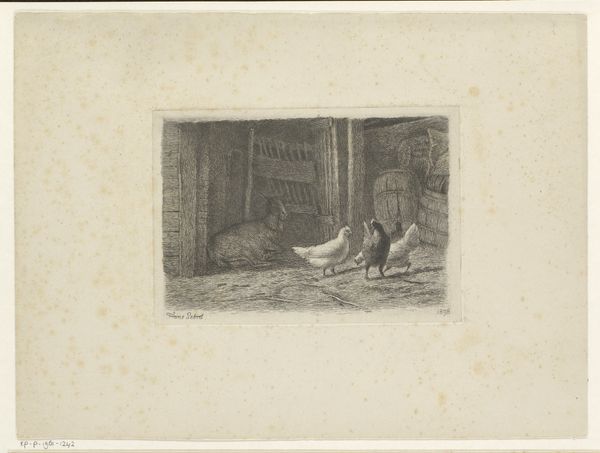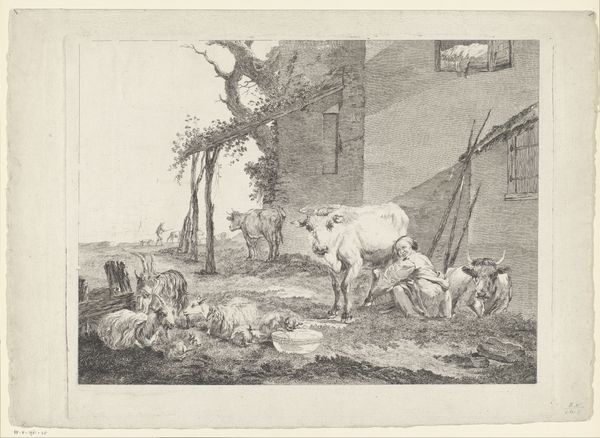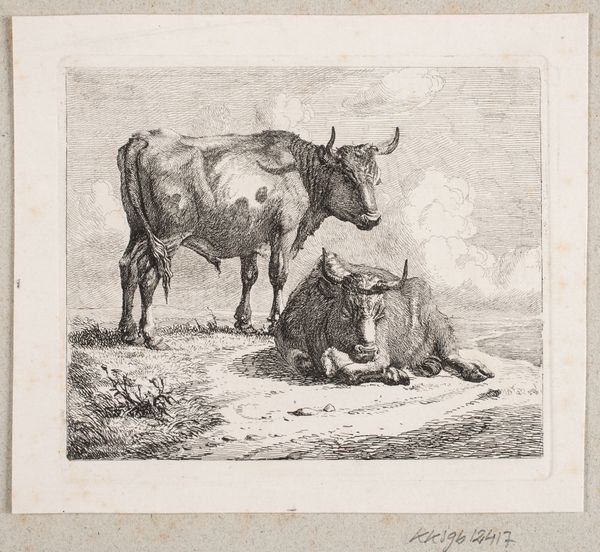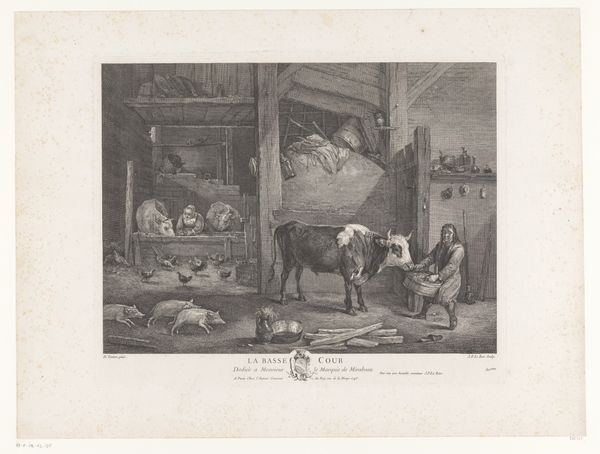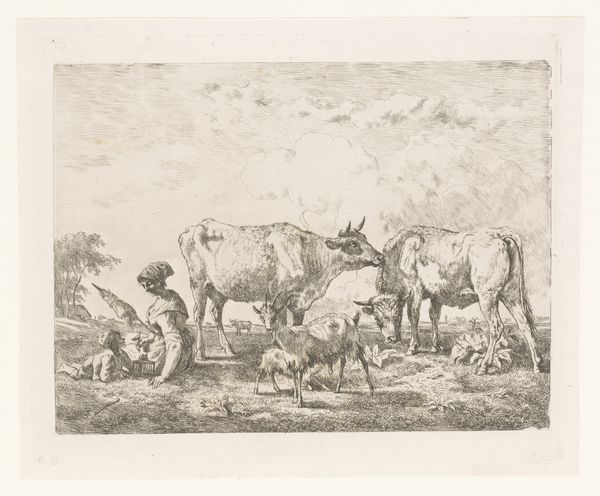
drawing, print, engraving
#
drawing
#
16_19th-century
# print
#
landscape
#
form
#
line
#
genre-painting
#
engraving
#
realism
Dimensions: 164 mm (height) x 227 mm (width) (plademaal)
Curator: Today we're looking at "En gedestald," which translates to "A Goat Stable," created by Johannes Wilhelm Zillen in 1859. It's held here at the SMK, Statens Museum for Kunst, and is rendered with exquisite detail using engraving. Editor: Oh, it feels like a tiny secret world! So much crammed into this small space—the goats, the straw, the bits of daily farm life poking through. It's a bit somber, perhaps a touch claustrophobic. What strikes me is the feeling that we're looking into something very real, but hidden. Curator: The process of engraving, the meticulous carving into the metal plate, aligns perfectly with that feeling. Each line is deliberately placed, and collectively they define the texture of the animals’ fur, the rough hewn wood of the stable, the hay. There's labor embedded in this image, mirroring the labor of farm life itself. And then the act of printing would make the work more readily available and repeatable. Editor: Absolutely, the making is so central. You know, it’s the dark, dense atmosphere inside that stable that grabs me. Almost theatrical with the bright light filtering through, highlighting that lead goat with the bell. Do you think Zillen was trying to capture something about rural life beyond just the observable? Curator: Perhaps he was, the "realism" tag assigned to the artwork speaks volumes in that regard! I mean, think about the social context: genre painting became incredibly popular in this timeframe because of industrial advancements and growing population, offering the new urban viewer glimpses of a romanticized rural past that in all likelyhood had its basis in work that had very real physical and mental effects on the working population, rather than an arcadian ideal. There are many ways in which "realistic" or romantic paintings of farm or rural scenes were nothing like their physical reality and social function to rural peoples. Editor: It’s intriguing, that tension you point out. Zillen shows us not a pristine pastoral landscape but the intimate, somewhat gritty interior of a stable. Those line are definitely capturing the atmosphere so strongly it almost becomes a mood in its own right! And indeed one for our considerations about labor and romanticization! Curator: Well, spending time with this has really shown me, again, the incredible power held by print media in communicating and perhaps skewing representations. Editor: And for me, it is that small reminder that great art sometimes whispers rather than shouts. This small drawing has stayed with me long after viewing.
Comments
No comments
Be the first to comment and join the conversation on the ultimate creative platform.



